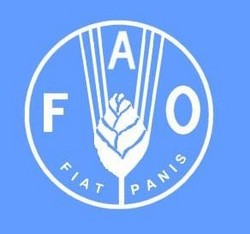
<!--
<!--<!--[if gte mso 10]> <style> /* Style Definitions */ table.MsoNormalTable {mso-style-name:"جدول عادي"; mso-tstyle-rowband-size:0; mso-tstyle-colband-size:0; mso-style-noshow:yes; mso-style-parent:""; mso-padding-alt:0cm 5.4pt 0cm 5.4pt; mso-para-margin:0cm; mso-para-margin-bottom:.0001pt; mso-pagination:widow-orphan; font-size:10.0pt; font-family:"Times New Roman"; mso-ansi-language:#0400; mso-fareast-language:#0400; mso-bidi-language:#0400;} </style> <![endif]-->
أرقام الفاو و البنك عن المزارع السمكية
محمد شهاب
Impact of climate change on fisheries and aquaculture
in the developing world and opportunities for adaptation
Article by:
Leon Williams (Corresponding Author)
Antonio Rota Senior Technical Adviser
FAO: Fisheries Thematic Paper: Tool for project design
-86% of fishers and fish farmers worldwide live in Asia, with the greatest numbers in China (8.1 million fishers and 4.5 million fish farmers
-In 2006 exports of fish were worth a total of $85.9 billion, more than half of which originated in developing countries
-Asia is a major producer of fish, accounting for 52% of the world’s wild caught fish, while aquaculture in the Asia–Pacific region accounts for 89% of world production by quantity and 77% by
-The livelihoods of 520 million people depend on fisheries and aquaculture (FAO, 2009a), 98% of whom live in developing countries (World Bank, 2005).
-World Bank (2005) indicates that the number of fishers in the world has grown by 400% since 1950, compared with a 35% increase in the number of agricultural workers over the same period.( WB 2005)
-37% of fish produced (live weight equivalent) is traded internationally (FAO, 2009a).
يمكن متابعة اخر أخبار المزارع السمكية و السمك و الدخول فى حوار مع افراد مجموعة (المزارع السمكية Aquacultures)على الفيس بوك و كنانة او لاين:
http://kenanaonline.com/hatmheet
http://www.facebook.com/groups/210540498958655/


ساحة النقاش